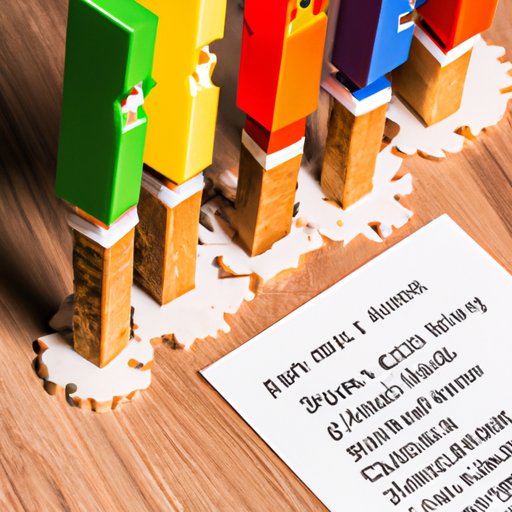Introduction
Private mortgage insurance (PMI) is an insurance policy that protects lenders from potential losses incurred by borrowers who default on their mortgage payments. PMI is typically required when a borrower puts down less than 20% of the home purchase price as a down payment. For many first-time homebuyers, PMI can be a necessary cost to make their dream of homeownership a reality. But how much does PMI cost?

Overview of Average PMI Costs
The average cost of PMI varies depending on your loan type, credit score, location, and other factors. According to the Consumer Financial Protection Bureau (CFPB), the average PMI rate for a conventional loan is 0.51%, with rates ranging from 0.25% to 2.00%. This means that for a $200,000 loan, the average monthly PMI cost would be around $83. However, this is just an average – the actual cost of PMI will vary from person to person.
A Comprehensive Guide to Calculating PMI Costs
Calculating the cost of PMI isn’t as simple as taking the average rate and multiplying it by the loan amount. To accurately determine how much PMI will cost, you must consider several factors. Here is a comprehensive guide to calculating PMI costs.
Understanding the Factors that Influence PMI Costs
There are five key factors that influence the cost of PMI: location, home price, loan type, credit score, and down payment amount.
Location
Where you live plays an important role in determining your PMI costs. Different states have different regulations and laws governing PMI, so the cost of PMI may vary from state to state. Additionally, certain areas may be considered “high risk” due to their location, which could lead to higher PMI rates.
Home Price
The higher the home price, the more expensive your PMI costs will be. Generally speaking, the larger the loan amount, the higher the PMI rate will be. This is because the lender takes on more risk with larger loan amounts, so they charge higher PMI rates to protect themselves.
Loan Type
The type of loan you choose will also affect your PMI costs. Conventional loans typically have lower PMI rates than government-backed loans such as FHA or VA loans. Additionally, some lenders offer special PMI programs that provide discounts on PMI rates.
Credit Score
Your credit score is another factor that influences your PMI costs. The better your credit score, the lower your PMI rate will be. This is because lenders view borrowers with good credit scores as less risky and therefore require them to pay lower PMI rates.
Down Payment Amount
The size of your down payment also affects your PMI costs. The larger the down payment, the lower your PMI rate will be. This is because a larger down payment reduces the risk to the lender and makes them more likely to approve your loan.
Exploring Different Payment Options for PMI Costs
In addition to understanding the factors that influence PMI costs, you should also explore different payment options for PMI. There are three primary ways to pay for PMI: borrower-paid PMI, lender-paid PMI, and single premium PMI.
Borrower-Paid PMI
Borrower-paid PMI is the most common way to pay for PMI. With this option, the borrower pays the PMI premium each month as part of their mortgage payment. The PMI rate will depend on the factors mentioned above, but it is usually around 0.5% of the loan amount per year.
Lender-Paid PMI
With lender-paid PMI, the lender pays the PMI premium upfront. This option can be beneficial if you don’t want to pay the PMI premium each month. However, you will still be responsible for paying the PMI premium in full, so this option may not be ideal if you don’t have the funds available to do so.
Single Premium PMI
Single premium PMI is the least common way to pay for PMI. With this option, the borrower pays the PMI premium upfront in one lump sum. This eliminates the need to pay monthly PMI premiums, but it can be costly if you don’t have the funds available to pay the full premium upfront.
Conclusion
PMI is an important expense for many first-time homebuyers, but it doesn’t have to be an overwhelming one. By understanding the factors that influence PMI costs and exploring different payment options for PMI, you can make an informed decision about how to best manage your PMI costs. With the right information, you’ll be able to calculate your PMI costs and find a payment option that works for you.
Summary of Key Points
• PMI is an insurance policy that protects lenders from potential losses incurred by borrowers who default on their mortgage payments.
• The average cost of PMI varies depending on your loan type, credit score, location, and other factors.
• Several factors influence the cost of PMI, including location, home price, loan type, credit score, and down payment amount.
• There are three primary ways to pay for PMI: borrower-paid PMI, lender-paid PMI, and single premium PMI.
Resources for Further Information
• Consumer Financial Protection Bureau – What is Private Mortgage Insurance (PMI)?
• Bankrate – PMI Calculator
•
(Note: Is this article not meeting your expectations? Do you have knowledge or insights to share? Unlock new opportunities and expand your reach by joining our authors team. Click Registration to join us and share your expertise with our readers.)
